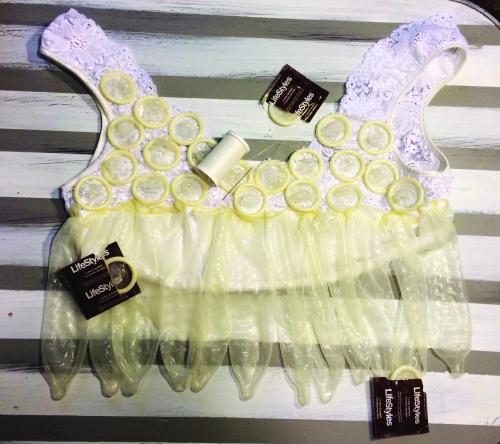Turning condoms into fashion

Student designers pair up into teams to create unique fashion show pieces that are made out of condoms.
February 4, 2016
The Wellness Center has transformed condoms into fashion
For the second consecutive year, the Wellness Center is putting on its annual condom fashion show.
Up to 10 couture high fashion pieces that have been handcrafted by Central students will strut their stuff down the runway, and each of these pieces will be made out of hundreds of condoms provided to the designers, free of charge, by the Wellness Center.
These pieces of condom couture are intended to spark a very important conversation about sex education in a creative way.
“It’s an educational opportunity for students to learn about condom use,” Mallory Morse, a health educator, said. “It’s about where they can go to get the resources to be safe and healthy, and to tear down the stigma around talking about condoms and sex.”
However, according to Sarah Berry, Central’s content and event marketing supervisor, this is more than just an educational event.
“This event is intended to help reduce the amount of stigma that is associated with condoms,” Berry said. “STIs and embarrassment around sexual health topics in a safe, educational and fun environment.”
In a large way, this fashion show is a reaction to the current conversation, or lack of conversation, about sexual education.
“I see that we are in a culture where sex is viewed as something that people should be ashamed to talk about, and that shouldn’t be the case,” Allie Baele, stage management major, said. “Those people who do not wish to acknowledge sex are the ones who will be most uncomfortable.”
According to Morse, the idea for all of this came to Central through Doug Fulp.
Fulp, a health educator at Central, was approached with the idea when working for Montana State University.
One of the local sexual health clinics in that area had brought up the notion of a condom fashion show to Fulp.
Fulp then put together a committee dedicated to researching if there were other places where condom fashion shows were held. The committee also looked into how these fashion shows took place and where they were performed at.
Fulp said that, through his team’s extensive research, they found that the earliest evidence of condom fashion shows came from the University of South Carolina and the University of Oregon.
Morse is a condom fashion show veteran as well, having done an internship under Fulp during his time at Montana University.
In fact, Morse was the head of the project for a number of years, working closely with Fulp to achieve the desired combination of fashion and education.
Now that both Fulp and Morse are at Central, they have transferred duties to Central student Kendall Lindberg, who studies sexual health. Organizing everything from the models to the teams that are going to be working together, Lindberg has followed Morse’s footsteps in creating this fashion show that will help engage the audience.
“We are very lucky to have her,” Morse said, speaking about Lindberg’s contributions to the project.
With the help of Lindberg, Fulp and Morse are using this creative outlet to spread the word of sexual health like the gospel. The plan is to continue to do it for many years to come.

